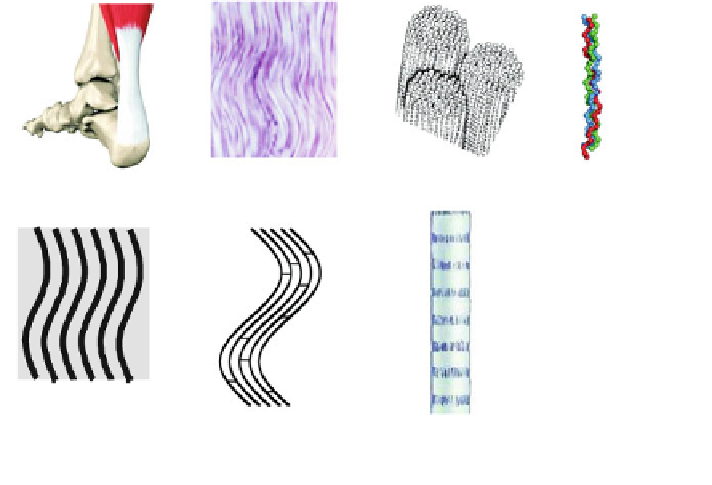Biomedical Engineering Reference
In-Depth Information
proteoglycan
Fig. 1
Hierarchical arrangement of collagen in a regular soft tissue such as a tendon
functional measures. Accordingly, following an inverse-like scheme, indirect
estimates of histo-mechano-chemical features, otherwise unknown, could be fur-
nished aiming to improve diagnostic procedures.
2 Biochemical, Histological and Mechanical Properties
Collagen in soft collagenous tissues is arranged according to a precise hierarchical
pattern, based on a number of different bio-structures characterized by very
different length scales (Fig.
1
): from the nanoscale (molecules), to the microscale
(fibers), up to the macroscale (tissue). Biomechanics of a single-scale bio-structure
and inter-scale coupling effects strictly depend on biochemical, histological and
mechanical features at the different scales, and highly affect tissue mechanics at
the macroscale.
2.1 Collagen Molecules and Fibrils
The collagen molecule subunit (tropocollagen) can be regarded as a one-
dimensional structure about 300 nm long and 1-2 nm in diameter, made up of
three polypeptide strands, each one being a left-handed helix. The three helices are
twisted together into a triple helix (namely, a ''super helix''), representing a
cooperative quaternary structure stabilized by covalent cross-links [
1
].











































































Search WWH ::

Custom Search